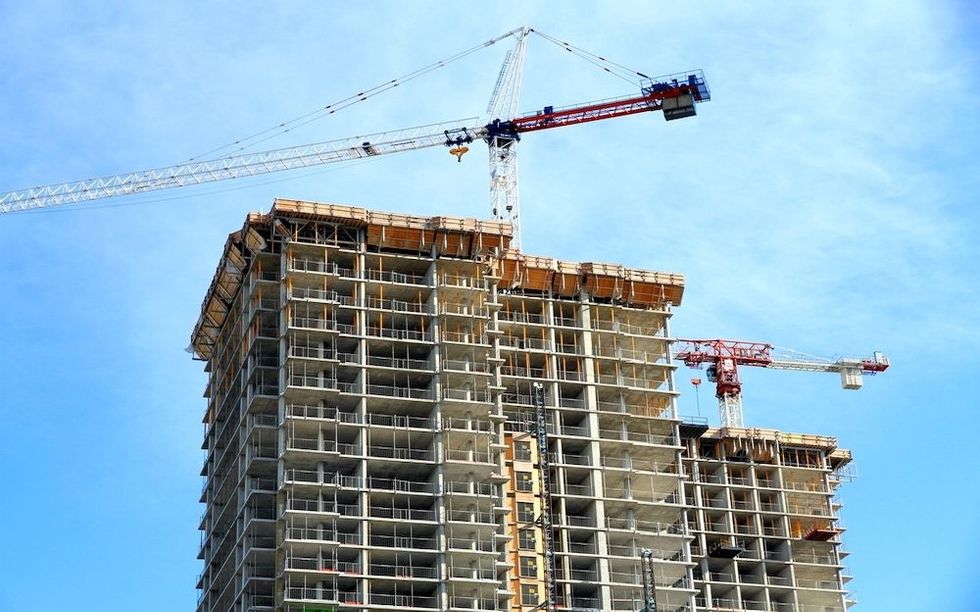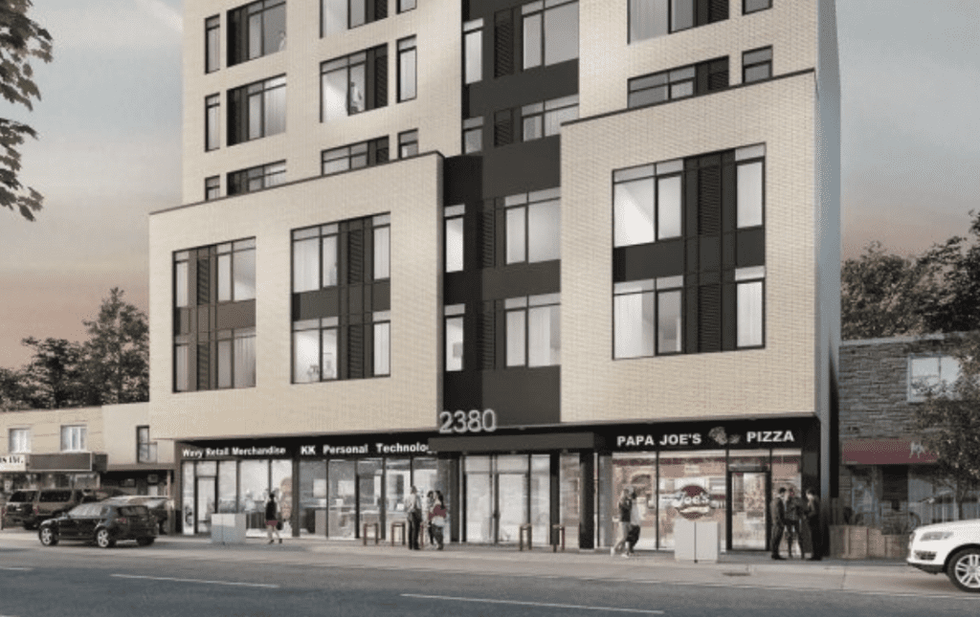All major streets and avenues in Toronto are all only zoned for three storeys, resulting in a cumbersome, years-long rezoning process for developers. But now, as-of-right zoning is being touted as a way to bring supply to market faster.
The City of Toronto’s webpage for the STAR (Streamlining the Application Review) process says it targets nine months, but the real number is grossly understated, according to the Residential Construction Council of Ontario (RESCON), which, in partnership with the University of Toronto a few years ago, determined official plan amendments and rezoning take three to five years. Richard Lyall, President of RESCON, says he’s heard different estimates, like an average of 22 months just for rezoning, but by implementing as-of-right zoning, which would automatically allow more building density on the city’s major streets and avenues, housing supply would reach the market faster.
Theoretically, that would both increase housing supply and stem runaway housing prices.
“We know our development and building approvals process is glacial, slow and fraught with risk because there are many elements within it where you don’t have real transparency and accountability,” Lyall said. “You’re left to the whims of whoever the reviewer of your file is, and that’s if they get to it in time. And we’ve heard rumours of people in the planning department doing the jobs of three people and some people not doing enough work at all, and you risk burning out the people who are trying to make things happen.”
READ: The GTA Housing Crisis Shows No Signs of Abating, Now What?
Lyall says the delays are expensive and developers merely pass them onto purchasers, which he calls a self-fulfilling prophecy: “They end up passing on the costs, so prices go up. Developers might eat the cost in the short term, but they’ll put those costs into future projects and make it back.”
Housing affordability has become a crisis in Toronto. Canada already produces fewer units of housing per 1,000 residents than its G7 counterparts because demand keeps outpacing supply, but there’s also a bevy of levies that contribute to the exorbitant cost, including mounting development charges and parkland contributions, initially paid for by developers but ultimately borne by consumers.

It’s for that reason Lyall questions why more isn’t done to find efficiencies that eliminate superfluous costs. He added that as-of-right zoning is one of the simplest, if not most obvious, implementations that can have outsized results.
“It’s on the main avenues that you want missing middle housing because the main streets and avenues are served by rapid transit,” Lyall said. “You have typical economies of scale for sufficient retail and grocery stores, and things like that. If you walk around cities like Copenhagen and Barcelona, they do have towers, no question about it, but the cores of the cities are six- to 12-storey buildings in redeveloped areas that were once for single-family homes. That kind of density makes the provision of other services that much more efficient, including government-related services; however, it’s much more expensive if you spread it all over the place.”
As part of Kingston Rd.’s revitalization in Toronto’s east end, the municipal government permitted as-of-right zoning for up to eight storeys at various points of the street. Mutual Developments is building a mid-rise condominium on Kingston Rd. and wanted additional density, which resulted in having to go through rezoning.

“It almost took two years, but that’s rezoning,” said Mike Bowering, President of Mutual Developments. “I don’t ask for a lot when I go to rezoning because you’ll get pushback from the city, so an extra two or three floors on an eight-storey building, you’ll probably be okay, but if you ask for 20 storeys, you’re probably in for a fight because that’s over and above what they’re looking for, so you have to be smart about it.”
Bowering, an experienced developer, factored in the cost of a rezoning delay during the project’s budgeting at around $500,000.
However, he noted that as-of-right zoning isn’t as simple as randomly assigning height limits. The Danforth, for example, is a narrow street with below-grade transit, which is a mitigating factor, whereas Avenue Rd., which has six lanes, is wide and can support much more density.
“Danforth is hard to build a tower on because it’s not very wide,” Bowering said. “If I bought something at Pape and Danforth and I wanted to build 10 storeys, the city would have to take a serious look because there’s a subway and a lot of people there, so they might do site-specific zoning for that particular property. But a lot of the height of a building is based on the right-of-way, and that’s the width of the street, so if the width is 37 metres, you should be able to construct a building on that street that is 37 metres high, and that’s exactly what we did on Kingston Rd.”
While As-of-right zoning is touted as a way to cut through red tape, its success is not likely to make a dent in excessive housing costs. For something like that, Lyall says, Tokyo is the city Toronto should model itself after.
RELATED: What Toronto Can Learn From Tokyo’s Approach to Urban Planning
Tokyo’s used to have a housing imbalance similar to Toronto’s, which resulted in high ownership and rental prices, however, after the national government assumed more control of housing guidelines in the 1980s and implemented more density without sacrificing space, Tokyo began averaging 100,000 new units of housing every year. In achieving supply and demand equilibrium, the world’s largest city is no longer beset by outrageous housing costs.
But to elucidate how many worlds apart Toronto and Tokyo are, Lyall uses Bloor-Danforth as an example of a befuddling inefficiency.
“Bloor and the Danforth are classic examples of large sections that have two-storey buildings with a subway below the route, and it’s been like that for how many decades?” Lyall said. “In Tokyo, they uploaded site plan approvals up to the senior level of government and that caused a building boom in which they managed to match supply and demand, and that tempered rental and ownership costs. The cost of housing hasn’t moved far beyond incomes in the last few years.”





















